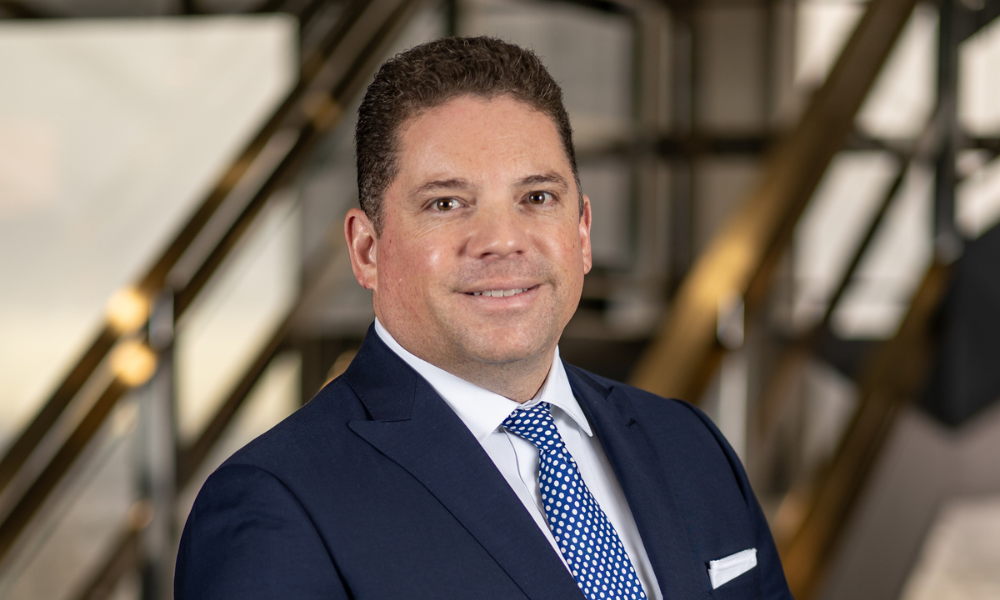Advisor details his approach to retired clients, and explains why $50,000 in retirement income today needs to be over $120,000 at the end of retirement

Preparing clients for retirement means walking them through a series of epiphanies. How long they’ll live. How much money they’ll need. How much of an impact inflation will have on their purchasing power. Darren Coleman takes his clients through those realizations one at a time, building their knowledge and challenging their expectations about a retirement that will probably last a lot longer than they think.
Coleman is the senior VP and portfolio manager, at Coleman Wealth Management of Raymond James. He explained exactly how he walks his clients through these epiphanies, how he challenges their assumptions, and how he positions their portfolios to last as long as their longevity demands. He begins the process with a straightforward discussion about how long a client expects to live.
“They have to realize they’re going to live longer than they think. If I ask people how long they think they’re going to live, they probably flash to how old their grandparents were when they passed away, so they go to that generation and think maybe 81 or 87,” Coleman says. “They forget when their grandparents were born. They don’t think about what nutrition was like, what healthcare was like, how much technology was available. I’ll often share with them articles that predict the first human to live to 150 has probably already been born.”
Anecdotal data and hard statistics back up Coleman’s premise. Canadian life expectancy has marched steadily higher since the 1980s. Canadians aged 65 will, on average, live to almost 84. The average drug store, Coleman says, stocks a lot more ‘happy 100th birthday’ cards than they used to. A centenarian used to be newsworthy, now they’re normal.
The idea of living longer than expected provokes a whole new set of questions among Coleman’s clients. Coleman takes them through a range of considerations, like whether they’re willing to work for longer, or even make a career change. He asks them about their activities, their social networks, and their values outside of work — which are often determinants of mental health and wellbeing in retirement. Perhaps most importantly, he asks them how much they think they’ll need every year in retirement income, and runs that number against 30 years of inflation.
Taking the example of a $50,000 desired retirement income for a 30-year retirement (aged 65 to 95) with an annualized inflation rate of 3 per cent, Coleman calculates that in order to keep pace with inflation, by the 30th year of retirement that $50,000 of retirement income needs to have grown to $121,363.
“If you don’t have a plan to triple your income in retirement, then I don’t know exactly what plan you think you have,” Coleman says.
Read more: Why this advisor treats retirement as a new stage of education for clients | Wealth Professional
Perhaps the biggest epiphany Coleman needs to bring his clients to follows from the initial goal of retirement savings: accruing enough capital to retire comfortably. Once a client is there, the next question is how do they stay comfortably retired.
Coleman believes the industry’s answer to this question is insufficient. The typical allocations in retirement are focused on capital preservation and fixed income. He believes a fixed income strategy in a rising cost world can’t work well. He proposes a “rising income” strategy which proposes a greater degree of equity exposure to offer growth that outpaces inflation. When clients raise fears around market volatility to him, he highlights that spending on a fixed income in an inflationary environment will see their savings disappear just as well.
“If you’re afraid of stock market volatility, you should be afraid of your debit card too,” Coleman says.
While ever client’s allocation is unique, the core of Coleman’s strategy is that well-managed businesses and real estate assets have provided the only source of historical outperformance over inflation. With those two asset classes as the core, Coleman works to develop a well-diversified portfolio capable of delivering returns that will outpace inflation.
“It’s not easy, and not everyone can do it, but if you begin with the two things that are most likely to work and put them in really good quality diversified portfolios of well managed businesses, real estate, and infrastructure, then you have a chance of making this work,” Coleman says.



